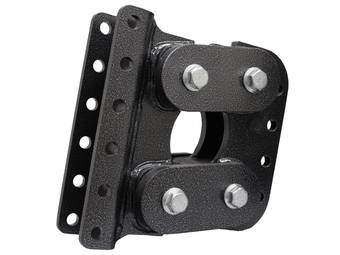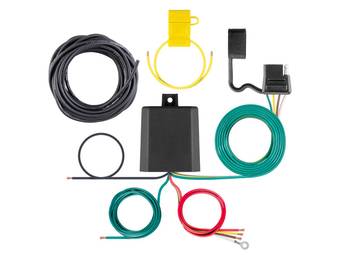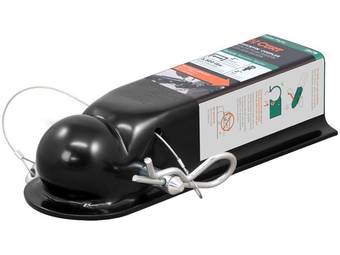Free Shipping on Orders Over $100
1993 Ford F350 Trailer Accessories
At RealTruck, we carry a wide selection of accessories and replacement parts to spruce up an aging trailer or optimize your new tow-behind, ranging from light kits and wiring harnesses to jacks and manual winches!
Trailer Types
There are multiple trailer types on the market, each featuring unique characteristics that lend it to a particular job or purpose. Some of the most common trailer types include:
Utility: Utility trailers are lightweight, cost-effective, and versatile, used for everything from hauling ATVs to transporting job site equipment and dump runs. These trailers come in various sizes and configurations, though most feature steel frames, low steel side rails, wooden decks, and fold-down steel loading ramps.
Flatbed: Flatbed trailers, often called ‘flat deck,’ are similar to utility trailers; however, they typically don’t feature size rails or hinged loading ramps. Instead, flatbed trailers feature a flat wooden deck for loading oversized cargo and equipment.
Boat: Boat trailers are engineered exclusively to transport boats. These trailers don’t feature a deck, only a simple frame and two angled, carpeted/padded rails to support the boat’s hull.
Camper: Camper trailers are fully-enclosed homes on wheels! They come in various sizes and configurations, including pop-up, A-Frame, and conventional hard-sided travel trailers. Most feature steel frames and fiberglass side panels for superior strength and corrosion resistance.
Vehicle: Vehicle trailers are similar to flatbed trailers; however, they typically feature larger decks, sloped rear sections, and pull-out ramps for easy loading. Some also feature an integrated winch for loading vehicles that can’t move under their own power.
Horse: Horse trailers are large, enclosed trailers that often resemble a 5th-wheel camper; however, they feature a gooseneck hitch for towing and large side doors with sectioned-off stalls for individual horses. These trailers also feature thin, aluminum siding to reduce weight, considering a full-grown horse can easily reach over 2,000 pounds!
Enclosed: Enclosed trailers refer to enclosed cargo or vehicle trailers with a fully-enclosed exterior, minimal windows, and a large, fold-down rear door/ramp. These trailers can be used to haul everything from oversized cargo to vehicles, depending on the size and weight rating
Cargo: Cargo trailers either feature an enclosed or open design, with open variants featuring high steel sides. Open cargo trailers are often used for dump runs or transporting building materials onto the job site, while enclosed cargo trailers are usually reserved for transporting valuable, oversized cargo, especially in poor weather conditions.
Accessories to Improve Trailer Towing
We offer several accessories to make towing a trailer simpler and safer, including:
Backup Cameras: Backup cameras, like the K Source Vision System Back-Up Camera, make hitching up to a trailer and checking in on your load far easier. These convenient cameras mount to the rear of your vehicle and film a comprehensive view of your rear surroundings, which display on an interior-mounted monitor.
Tail Light Wiring Kits: Damaged tail light wiring harness? Intermittent functionality? No problem! We offer full replacement tail light kits, like the Curt Multi-Function Taillight Converter Kit, which converts your trailer’s aging 2–3 wire setup to a modern 2-wire system for improved reliability.
Winches: Whether loading vehicles, heavy toolboxes, ATVs, or other wheeled cargo, a premium trailer winch, like Curt Trailer Winches, will make your life far easier!
Tongue Jacks: After years of service, trailer tongue jacks can wear out or fail. Luckily, we carry a wide selection of replacements, like Curt Trailer Jacks & Accessories!
Trailer Accessory FAQs
Q: How long should a trailer tongue be?
A: Trailer tongues should be at least as long as half of your vehicle’s width, minimizing the risk of jackknifing while maneuvering. For added assurance, we recommend a trailer tongue that’s 8–12 inches longer than the minimum length.
Q: Should trailer tongues be high or low?
A: In a perfect world, a level trailer is preferred; however, that’s not always achievable. If you must choose between your trailer sitting tongue high or tongue low, it’s always best for the trailer to sit nose-down, so long as your hitch receiver can handle the added tongue weight.
Q: How do you back up a trailer?
A: Backing up a trailer takes time and patience; however, a simple trick to remember is that a trailer tends to move in the opposite direction of your truck’s rear end. For example, turning your steering wheel to the right will cause the rear end of your truck to veer right as well; however, this will direct the trailer left.

















